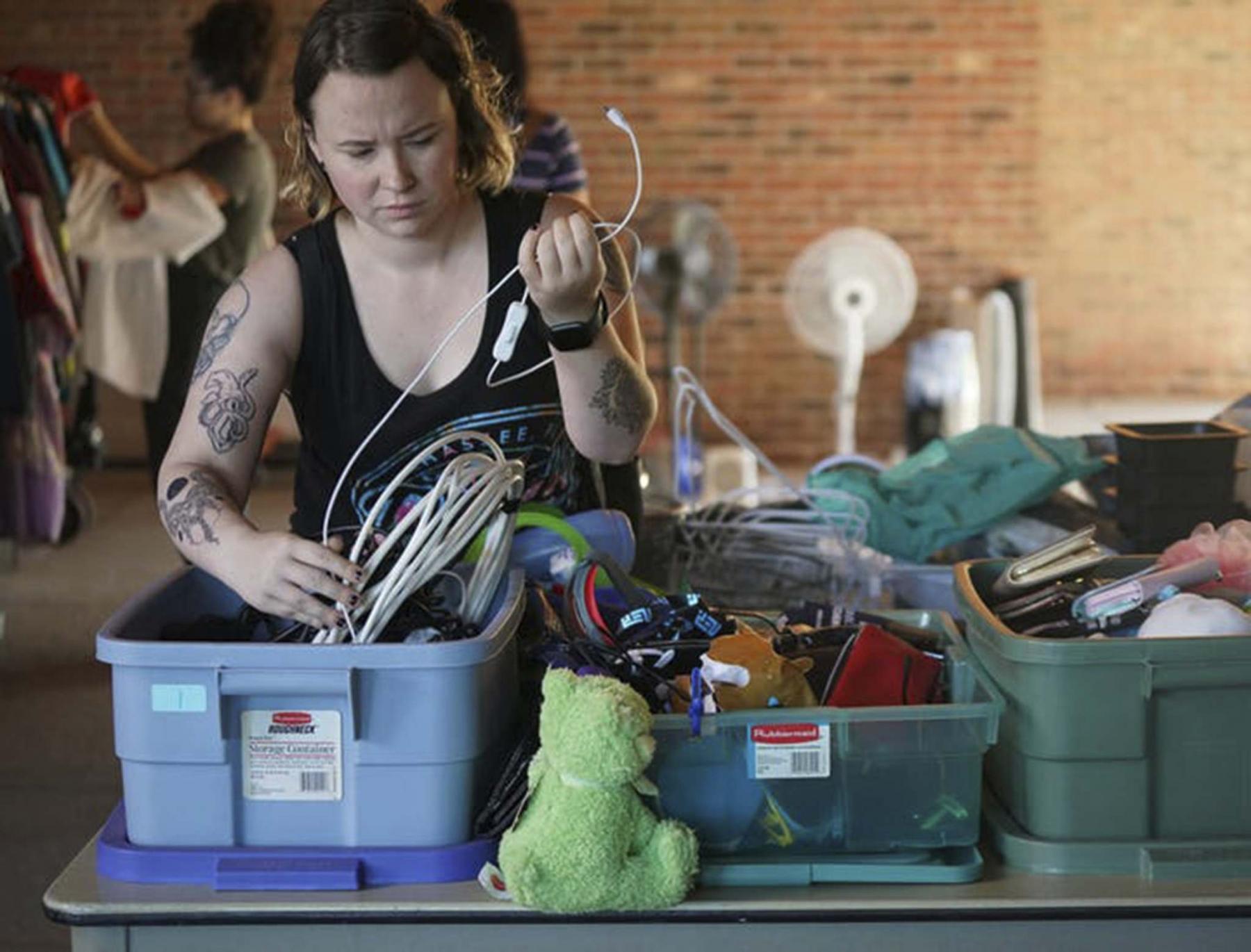Balancing hampers piled with clothes, shower caddies, desk lamps and other dorm essentials on their hips, a cluster of Hamline University students were looking for the checkout counter.
There wasn’t one.
"You can just take it," Emma Kiley said. "Everything is free."
Kiley, an AmeriCorps VISTA staffer at Hamline, was volunteering during the St. Paul college’s second annual Pop-Up Free Store, where arriving students were able to pick up futons, coffeemakers, full-length mirrors, even pompoms in Hamline’s colours of burgundy and grey.
College staffers and volunteers had saved thousands of kilograms of merchandise from being thrown out during move-out week last spring. Now it was clean and carefully arranged on tables and racks in front of the Bush Memorial Library.
For these college kids, back-to-school shopping doesn’t necessarily mean a trip to the store anymore.
"I keep saying, ‘You know, before you do your Target run, see if there’s stuff that’s reusable,’" said Valentine Cadieux, director of sustainability at Hamline. "The average college student throws away 640 pounds of stuff a year. And over half of that is when they move out."
The free store at Hamline is just one example of how sustainability efforts have become the norm at many higher education institutions. From reducing energy use to sourcing food locally and composting leftovers, practices that once seemed ultra-green are becoming commonplace on campuses across the United States.
Many colleges and universities have sustainability offices, which co-ordinate a range of green initiatives. Reducing waste during move-in/move-out is especially important, said Monika Urbanski, data and content manager at the Association for the Advancement of Sustainability in Higher Education. It’s not only a way to help the environment, but it also helps students by allowing them to stock up on supplies at little or no cost.
"They have become quite common, especially on larger campuses," Urbanski said of the free stores.
Their success is due, in part, to students, who are embracing the reduce/reuse/recycle ethic.
"You never know what you’re going to find!" sophomore Tatum Sesow exclaimed as she and her roommate Katherine Steiner shopped the Free Store, where they picked up a bright pink shag rug. Steiner said it would be perfect for their dorm room.
DUMPSTER DIVERTING
To create the Free Store, Hamline partnered with the University of Minnesota’s ReUse program.
In 2013, the U’s ReUse program launched its Pack and Give Back initiative to collect, sort and store students’ unwanted stuff at move-out time and "sell" it for free later. The initiative was inspired by similar efforts at Michigan State University and Washington State University.
"The way it used to work is that when students moved out, there was too much material coming too fast," said Todd Tanner, the ReUse program’s manager. "Nobody could sort it or try to figure out what they would do with it. Unless the students took it upon themselves to try to bring it to Goodwill, or Arc’s Value Village, it would be thrown away."
Now the U collects reusable items in fall and stores them — along with what Hamline collects — in a warehouse. In fall, both schools host free stores. (The U’s free store is also open to nearby residents during its last week.)
Tanner said that these initiatives do more than just recycle: they save students money, and reduce the cost and environmental impact of manufacturing, packaging, marketing and transportation.
"There’s a lot of impact that builds into it when you can take those items and get them back into somebody’s hands," he said.
COMMITTED TO CHANGE
Staffers and volunteers at Hamline kept about 2,700 kilograms of unwanted items out of the waste stream last spring alone. While that’s an impressive amount, it hasn’t yet reduced the cost of the university’s garbage collection, Cadieux said. Still, the popular program is likely to continue and even expand.
"We’ve also been collecting graduation gowns, things that are one-use that everyone needs," she said.
For the university, being sustainable is about more than just reducing waste.
"Hamline has defined sustainability as the conditions under which all people can thrive in the long term," said Cadieux, who teaches a popular class on the discipline.
At nearby Macalester College, there’s a free store running all year inside Kagin Commons. Called the Mac Free Swap, students can drop off and pick up stuff during the building’s regular hours. In spring, the FreeSwap also has "amnesty boxes," where kids can return dishes or silverware that they "borrowed" from the dining hall.
Soon after it started its sustainability office in 2008, Macalester created the goal to be zero-waste by 2020, said Suzanne Savanick Hansen, the college’s sustainability manager.
— TNS




